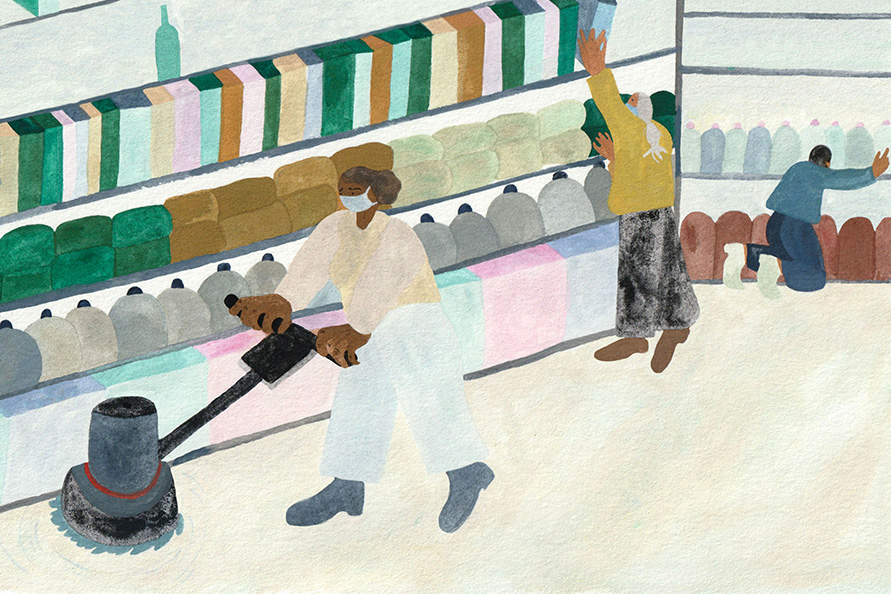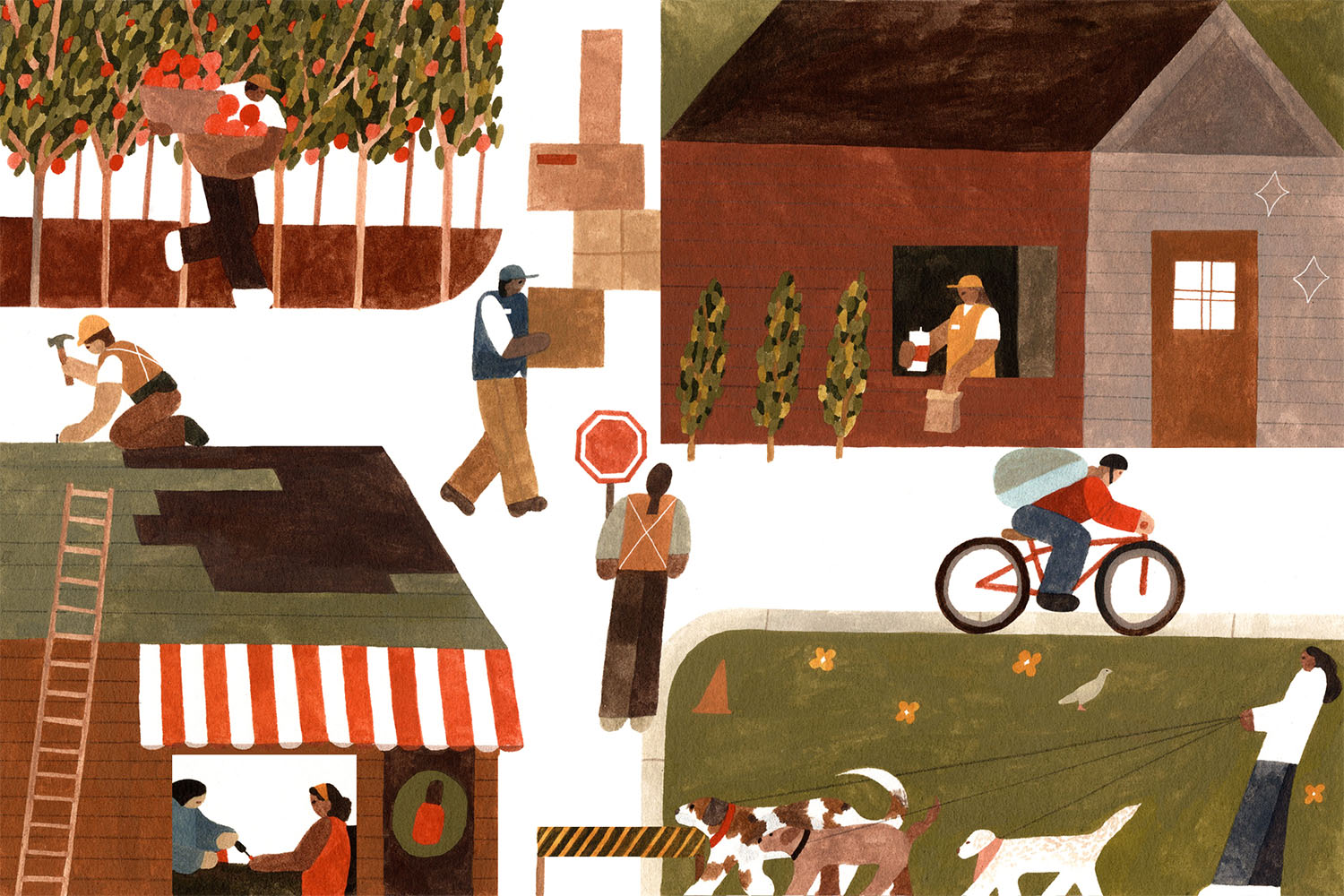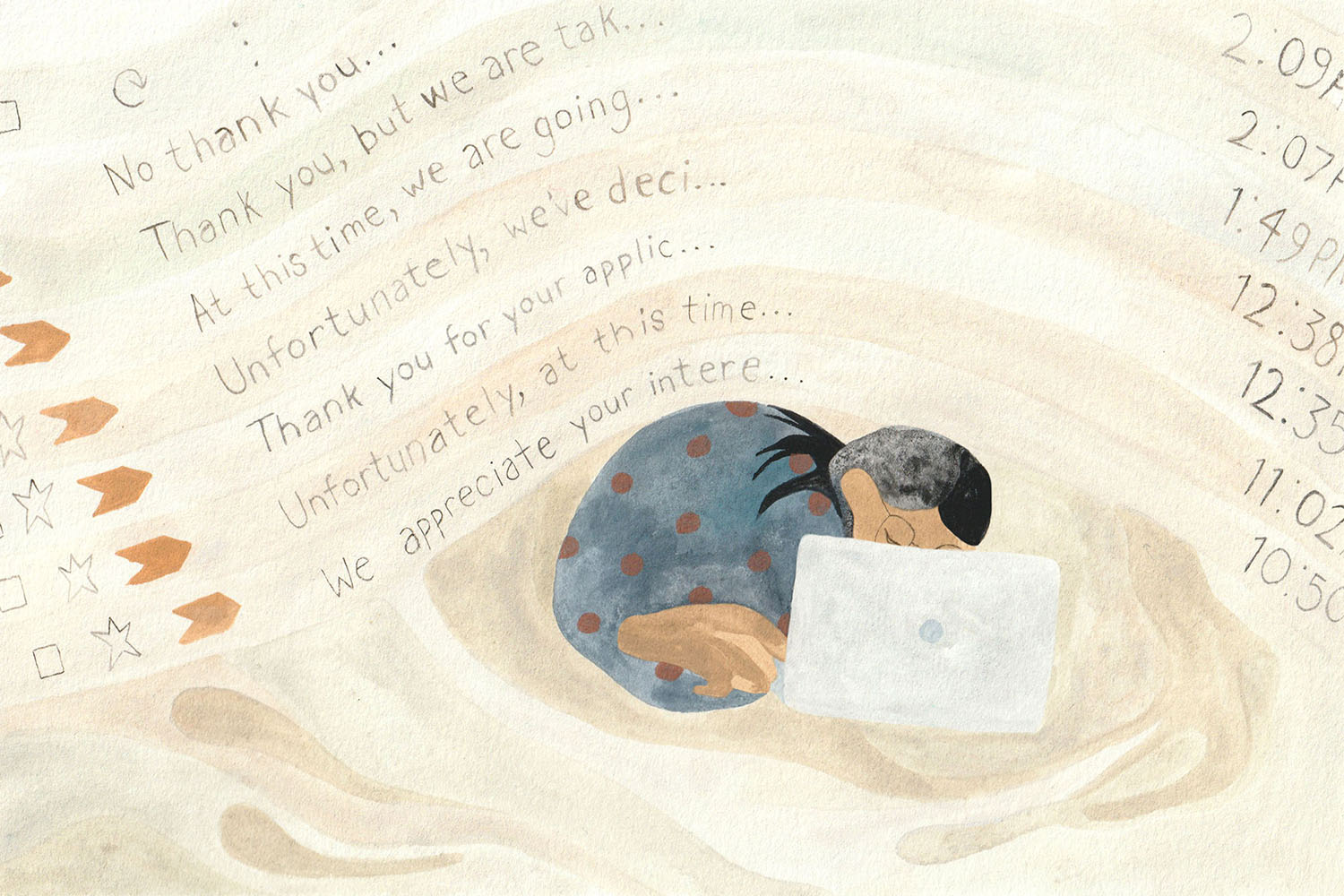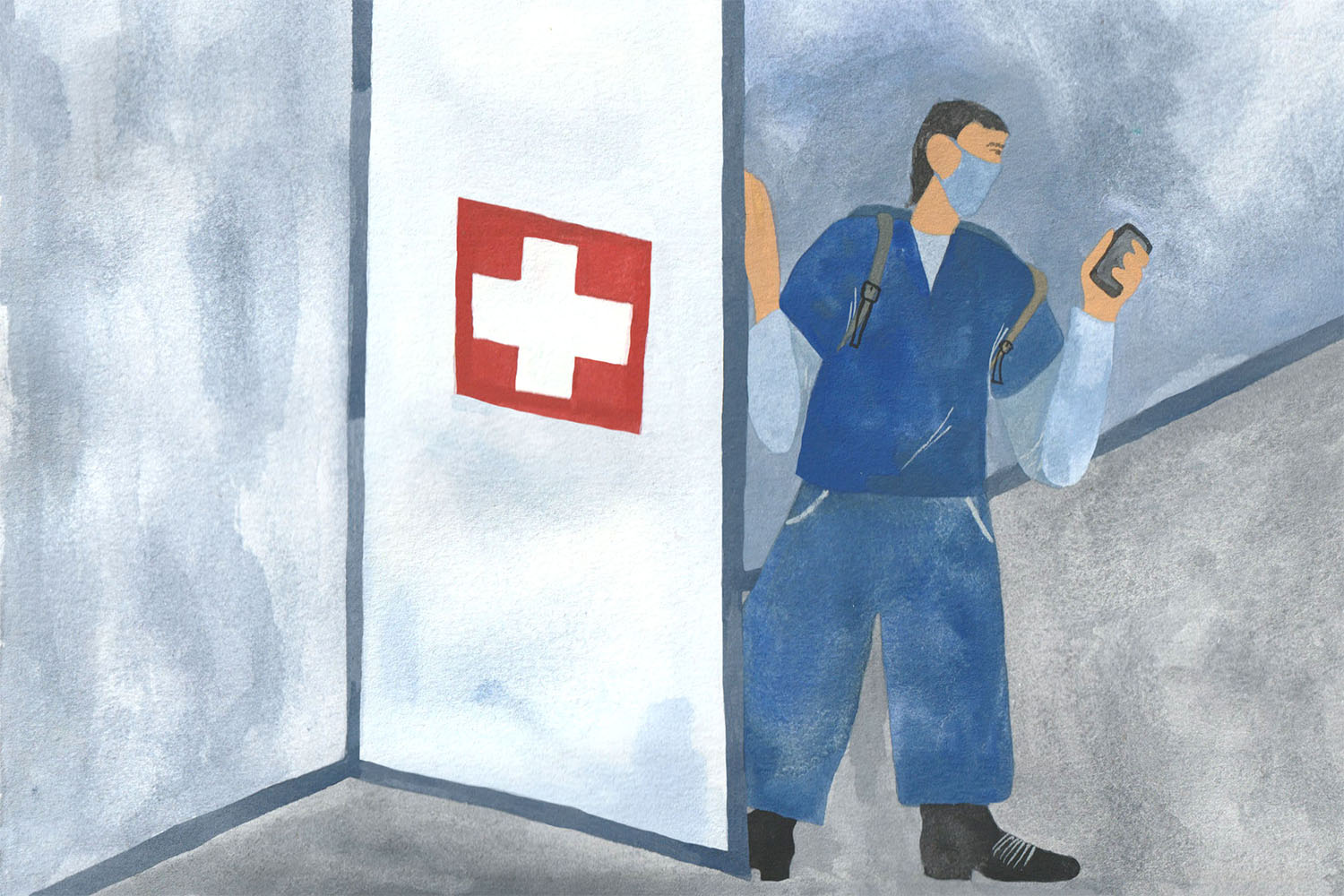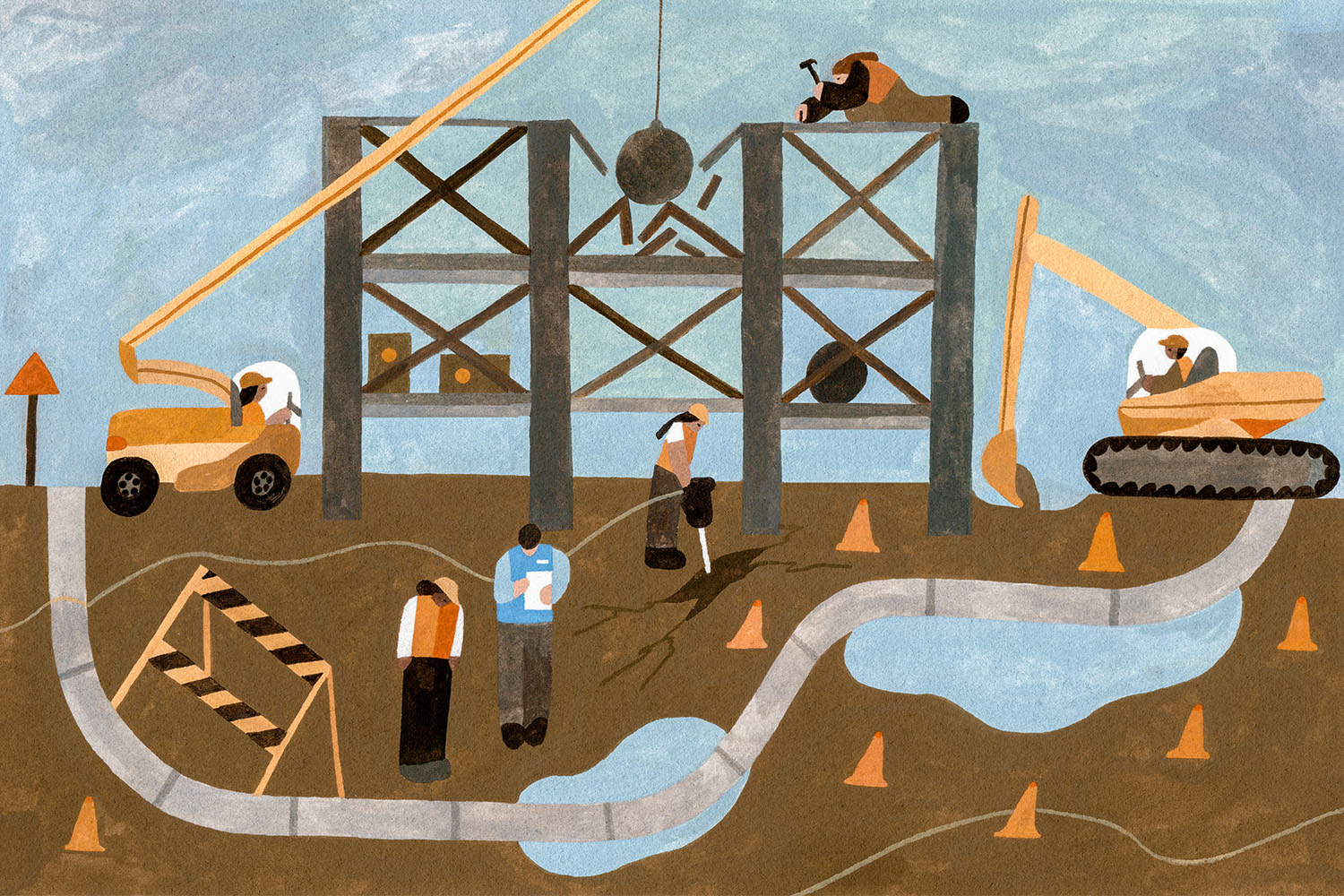
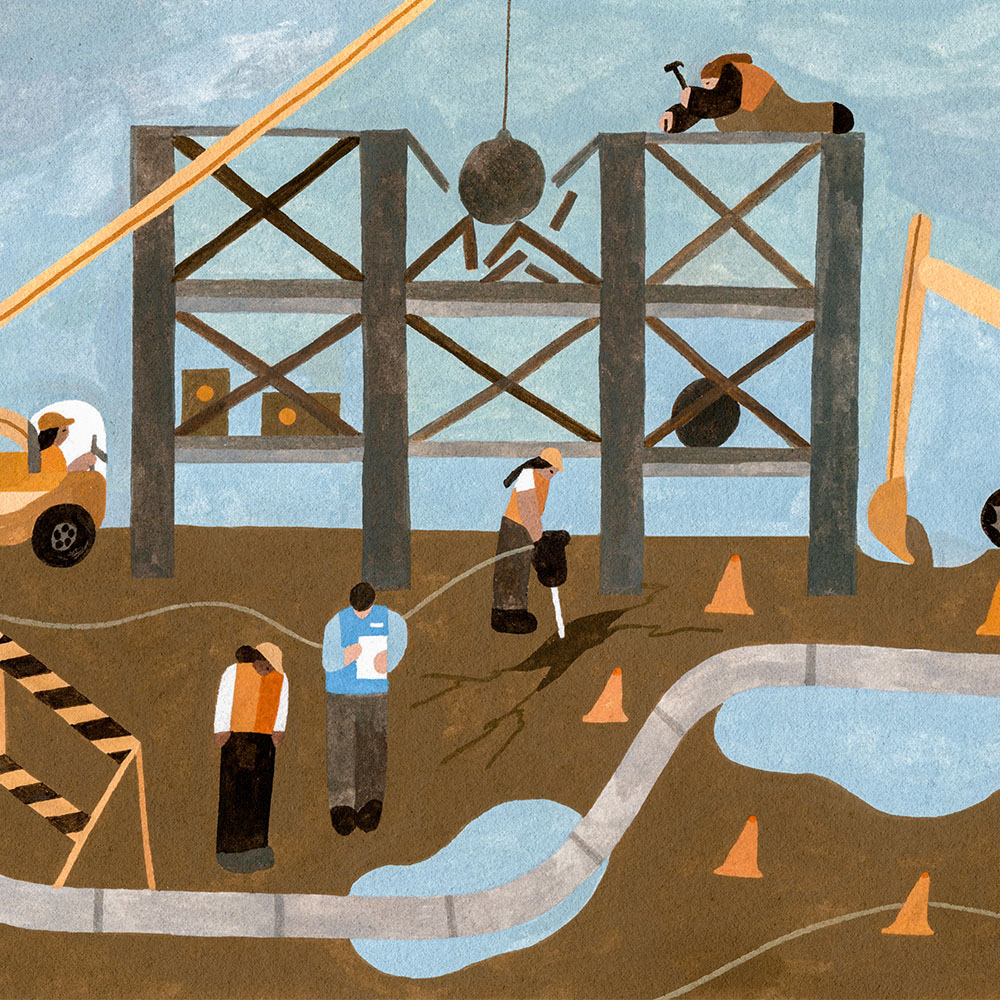
To his family and colleagues, it was almost like Mark Dennis predicted his own accident.
For 31 years, Mark worked as materials handler at the University of Guelph, transporting things on campus. The 59-year-old father of two delivered anything and everything—from mail to landscaping equipment to laboratory freezers. He guessed he was one of the few people who had seen every single building on campus.
But in conversations with his brother Jim Dennis, he often shared worries about his safety. The brothers met at least four times a week—grocery shopping together on Sundays, going to their 90-year-old mother’s to take care of her house on Thursdays. Jim remembers Mark talking about the conditions at work, where he was asked to commit to tasks his team didn’t have the resources or abilities to complete safely, like hauling heavy, oversized items up stairs.
“We haven’t got the equipment,” Jim recalls him saying. “We haven’t got the manpower for that.”
Janice Folk-Dawson, Vice-President of the Ontario Federation of Labour, was Mark’s friend and colleague for three decades. They were hired at the University within a year of each other, eventually working in the same department and taking part in union work together. Folk-Dawson went on to become president of their local union from 2001 to 2019, and she recalls Mark and other colleagues sharing their frustrations with her.
“There were a lot of complaints about the equipment, and health and safety concerns about the equipment that material handlers were using,” she says.
But Mark never felt comfortable making a complaint to the Ministry of Labour, Training and Skills Development (MLTSD) regarding conditions in the workplace. He was never told not to, or pressured against it. Rather, he worried about his job, about upsetting his higher-ups.

According to Jim, Mark was worried about the consequences: would his supervisors get angry? Would it jeopardize his work? “I’m too close to retirement, I can’t afford not to have a job,” he would say.
On May 18, 2021, Mark was transporting bags of soil, stacked high on skids that had been loaded into the bed of a new truck—a vehicle with an unfamiliar hydraulic tailgate that, according to Jim and some of Mark’s colleagues, their team hadn’t received training to operate. Prior to his accident, Mark had expressed his concerns about the truck to his brother, describing how his team hadn’t even been able to find a manual for the vehicle.
As Mark began to move the skids, two things happened at once, as he later recounted to his daughter: the load started to shift, hundreds of pounds of soil threatening to fall onto him, and the hydraulic tailgate tilted toward him. In an attempt to avoid being pinned between the tailgate and the bags of soil, Mark jumped off the truck, breaking his left leg right below the knee on impact. (None of the facts of the incident have been proven in a court of law.)
“It was either going to come down on me, or I had to get out of the [way],” Jim recalls Mark saying.
“The doctors told him it was a life-changing and job-changing break. It was going to be a long, long time to repair.”
Jim still remembers all the times before the accident that his brother had shaken his head and said “somebody is going to get hurt.” At the time, neither of them had realized it would be Mark.
Mark was one of the thousands of workers in Ontario who don’t report unsafe working conditions to the Ministry for fear of reprisal from their employers. That reticence is part of the reason inspections by the Ministry are vital to maintaining workplace health and safety.
But in the last decade, inspection rates in Ontario’s industrial sector—the largest category of workplaces, which includes offices, factories, retail stores, restaurants and other commercial establishments—have fallen by nearly 30 percent, analysis by The Local has found. In the same period, critical injuries in industrial workplaces have more than doubled, with more than 2,000 taking place in 2019.
In the 2009/10 fiscal year, inspectors from the MLTSD conducted almost 55,000 health and safety inspections in the sector. Ten years later, that number was just shy of 39,000, despite a small increase in the size of the workforce. (Analysis does not include data from 2020/21, which is anomalous because of the effects of the pandemic.)
Proactive inspections are perhaps the most vital preventative measure implemented by the MLTSD: inspectors visit workplaces unannounced, noticing and issuing orders for unsafe working conditions before an injury takes place. Data provided by the Ministry shows that these types of inspections have dropped precipitously in the last decade, down nearly 60 percent since 2009/10.
These trends are the result of a vicious cycle in the health and safety sector.
The Ministry reports that in the last decade, reactive inspections—investigations resulting from complaints received by the MLTSD—have become more complex, and therefore may take longer to complete.
But as the demands placed on inspectors increase, and the size of the workforce remains the same, they have less time to devote to proactive inspections. A drop in those inspections, in turn, means a greater likelihood of unchecked, unsafe working conditions leading to more injuries—which means even more reactive inspections. In the last decade, reactive inspections have gone from making up 30-40 percent of all inspections, to nearly 60 percent in 2019/20.
The Local spoke to a former health and safety inspector, Paul, who left the role three years ago after 15 years in the field. Inspectors are asked to sign non-disclosure agreements when they leave their roles, so he has been given a pseudonym to protect his identity.
“We’re all expected to do more with less,” Paul says, explaining the decreasing number of inspections conducted in the province. “We are understaffed in so many ways, and so many offices.”
In 2002/03, the MLTSD hired 152 new inspectors for a total of 430, resulting in a jump in the number of inspections taking place in the years following. But in the early 2010s, numbers began to decline, plateauing by the end of the decade at rates closer to those seen before the wave of new hires, despite the fact that 15 more inspectors were hired in 2017.
“I would challenge that there’s ever been 430 inspectors in the field at one time,” Paul says. With employee absences for parental leave, or to fill interim managerial positions, the inspectorate is rarely staffed at full capacity. And given the time it takes to train a new inspector—which could take up to 8-12 months—the MLTSD doesn’t hire inspectors to fill in those temporary absences either, he adds.
Concurrently, the number of Ontario business locations has increased by nearly 100,000 in the last decade. An Auditor General’s report from 2019 estimates that the MLTSD’s records contain only 28 percent of all businesses in the province, and inspects around 2 percent of those.
Reactive inspections following a complaint, critical injury, or death require a far greater investment of time than proactive inspections, Paul adds. “You’re doing all this information gathering, training records, witness interviews, which could go into more than a day just on the initial contact and conversation.” The process can often take inspectors out of the field for days at a time, even more so if legal action is taken.
“It needs to be done for the protection of workers in the province of Ontario,” Paul says. But reactive inspections result in fewer orders than their proactive counterparts, and leave less time for other field visits.
“So when you have someone out of the field doing more reactionary stuff, who’s doing the proactive stuff?”
An inability to perform proactive inspections means workers could be left in unchecked, unsafe environments—which might explain the rise in critical injuries observed in Ontario over the last decade.
In 2011, the earliest year for which data is publicly available, the MLTSD recorded 600 injuries in the industrial sector that resulted in either blood loss, unconsciousness, blindness, burns, or the loss or fracturing of limbs or multiple digits. In 2019, there were 2,050—almost 3.5 times higher than eight years prior.
A 2017 jump in the critical injury rate could be in part due to a clarification by the MLTSD on whether fractures and amputations of single fingers or toes constitute critical injury. But even since then, critical injuries have risen by 500 in the span of just two years.
“Why are you not hiring more inspectors?” Paul says. “If the province of Ontario doesn’t react or do something to the fact that the numbers of proactive visits and orders are going down, as a result of […] reactive work, something’s wrong.”
In Ontario, orders are issued when a health and safety inspector observes a workplace to be in contravention of the Occupational Health and Safety Act (OHSA). Proactive inspections are generally understood to result in more orders, explains Paul, because workplaces don’t have the time or notice to prepare for an inspection, and because the inspector has an opportunity to observe the workplace as a whole, rather than focusing on a specific complaint.
Between 2011 and 2019, the period for which data is available, the number of orders issued annually has fluctuated—peaking in 2011/12 and 2015/16 around 70,000, and falling the next year to 56,600. In 2019/20, orders fell to their lowest recorded rate, with a little under 46,000 issued.
In particular, Stop Work orders—issued to cease work in an unsafe environment—have decreased by 54 percent between 2011 and 2020 (pre-pandemic), the period for which data is available.
In sharing data around Stop Work orders, the MLTSD said: “There are several factors which may explain the decline in stop work orders being issued in the industrial sector. For example, once these contraventions are corrected by an employer, they are unlikely to fall back into non-compliance.”
However, the Auditor General’s 2019 report found that when it comes to health and safety inspections in Ontario, many companies with repeat inspections “have been issued orders for violations and contraventions relating to the same type of hazard in multiple years.”
The Ministry said that observation applies to orders broadly, rather than just Stop Work orders.
There are some obstacles that stand between an inspector and trying to issue an order. On occasion, although not often, Paul says he’s been questioned by his managers for issuing too many orders for a given workplace.
“There’s a subtlety to it,” he says. “It has to do with the personality of folks, and the perception of management on individuals that they think that they can try and curb or influence with less orders.”
Most often, Paul notes, inspectors stand their ground and issue orders anyway. Instead, the bigger obstacle is the demand to meet performance targets in the workplace, especially having to complete multiple inspections in a day when numbers are down.
“I’m pressured to get in and out,” Paul says.
“At the end of the day, we’re talking about workers’ lives. They’re negotiating our health and safety”
The Ontario Public Service Employees Union (OPSEU), which represents MLTSD inspectors, reports that the pandemic has worsened working conditions for inspectors.
“Inspectors are reporting burnout as a result of the pandemic,” they told The Local in a statement. “Their training has not kept up with changes in industry trends.”
OPSEU added that the Ministry failed to adequately enforce precautionary measures for workers’ health and safety during the pandemic.
“Investigating fatalities and serious injuries in a system that does not support injured workers is extremely stressful,” the statement continued. “Hiring more inspectors would help.”
Last fiscal year the Ministry added 62 new inspector positions in response to the impacts of the pandemic on workplaces.
When asked for comment, the Ministry said: “Our managers work with staff to ensure they have the tools and support they need to carry out their duties while maintaining inspectors’ health and safety.”
“Managers have not reduced the autonomy and authority inspectors continue to have,” they added.
They also stated that inspectors still conduct “considerable inspections of workplaces” during reactive visits.
But Paul and other critics of the Ministry feel the workforce is understaffed and overburdened, and that higher numbers of worker injuries are the result of a system that, at its upper echelons, is “in bed with industry and employers.” And the problem isn’t partisan: both Liberal and Conservative provincial governments have pushed forward legislation and cuts that erode workers’ existing health and safety protections.
In 2019, the Conservative government passed a “red tape reduction” bill intended to “remove regulatory roadblocks for businesses.” Prior to this, the Liberal government had signalled an interest in red tape reduction in 2014. The concern, then and now, is that this business-friendly approach could compromise important health and safety regulations in the process.
And over the last six years, the Workers Health and Safety Centre (WHSC), which provides health and safety training and certification to workplaces across the province, has struggled with the funding it’s received from the Ministry of Labour.
“If our core funding levels don’t change, then our ability to maintain current levels of service for all constituents and clients, and especially front line service, is at threat,” a 2015/16 annual report from the WHSC read. Two years later they reported: “WHSC has not had a sustainable funding increase from the government in over a decade.” In 2019/20, WHSC funding from the Ministry fell by nearly $450,000, but returned to prior levels the following year.
In their statement, the MLTSD said, “The ministry has identified opportunities to streamline, clarify and update existing regulatory requirements. This is always done in a manner that does not reduce worker health and safety.”
They added that the WHSC and other associations “have always received sufficient funding to deliver their programs.”
But to critics, it’s clear the provincial government’s decisions are making it harder to train workers and supervisors in health and safety, and easier for employers to potentially avoid accountability when it comes to maintaining safe workplaces.
“At the end of the day, we’re talking about workers’ lives,” says Paul. “They’re negotiating our health and safety, and that’s not acceptable.”
After Mark’s accident, he wasn’t allowed to put any weight on his leg. At 6’4”, he was too tall to use crutches and so he used a wheelchair. Jim would visit him at least once a day, “just to make sure that he could get to the washroom, get something to eat, and to make sure he was okay.”
During those visits, Mark expressed fears about whether he’d ever be able to go back to work. It seemed like the worst had happened: after years of raising concerns to his supervisor about health and safety in his workplace, he was the one who had suffered.
The threat of precarity that workers like Mark face has worsened with the rising use of agency workers: employees often fear that if they complain about working conditions, their employers will replace them with temporary workers, who are in turn even more precarious and less able to raise concerns about their conditions.
Workers are supposed to be protected from reprisals under the OHSA, but research looking at cases presented to the Ontario Labour Review Board cited calling an inspector as a factor in nearly 30 percent of reprisal cases reviewed.
Under the OHSA, the primary point of complaint in an unsafe work environment should be a supervisor or employer—it’s a foundational tenet of the Act, known as the Internal Responsibility System (IRS). The IRS means that employers are expected to take every precaution they can to ensure a safe working environment, and that workers are obligated to report unsafe conditions they observe or experience to their employers.
But in practice, neither of those things take place as they should.
“The risk that the workers have, and the risk that the employer has, is totally not the same,” says Vinay Sharma, a national health and safety representative for Unifor. “Management, they have one main objective: to make more profit, no matter what happens. And we, the workers, go in and we risk our lives.”
When workers do bring concerns to workplace health and safety committees, two things happen, Sharma explains. On the one hand, workers aren’t always fully aware of their rights; on the other, employers don’t always come to the table intending to make the necessary changes, despite having the power to do so.
“[If] all of the people are not on the same page, when you go to those meetings, nothing gets done,” says Sharma.
When internal discussions fail, the Ministry can be consulted: the external counterpart to the IRS. But the political whims of the provincial government can swing the pendulum in favour of either internal or external responsibility. Historically, greater emphasis has been placed on internal regulation, and therefore on workers and employers, rather than inspectors in upholding workplace health and safety. Critics of the IRS have long questioned whether it’s realistic to “encourage self-reliance” when it comes to health and safety, when profit often dictates employers’ priorities.
“Every effort is made [by employers] to not spend money, and everything costs money,” Sharma points out—including health and safety. By that logic, the math feels pretty easy.
The OHSA is also supposed to protect workers’ right to refuse unsafe work situations. But the erosion of health and safety training over time has meant that both workers and supervisors don’t have the resources to recognize unsafe work environments.
Laura Maclure, current president of Mark’s union, CUPE Local 1334, points out that one of the key gaps in training is that supervisors and employers aren’t expected to have health and safety certification training, just basic awareness training. This means that supervisors often don’t have the same high-level training their employees do.
“That doesn’t give [supervisors] the knowledge or the tools to recognize hazards in the workplace and remove them. And it doesn’t also ensure that they have the ability to recognize a refusal of unsafe work, and how to trigger that process,” she explains . “[It] doesn’t guarantee that you have a competent supervisor. I think that is woefully inadequate.”
Most workers, Maclure points out, trust their supervisors to know how to recognize unsafe working environments, and therefore follow the instructions given to them—but that trust is often unearned.
“Management, they have one main objective: to make more profit, no matter what happens. And we, the workers, go in and we risk our lives.”
On the evening of June 10, just over three weeks after the accident, Jim dropped by Mark’s house—something both he and Mark’s younger daughter did daily, taking care of him following the accident. The brothers had a couple of beers out on the deck, and Mark was in a great mood, Jim recalls, only letting on once that he wasn’t feeling well. After Jim left, Mark called his mum, the last person he ever spoke to. The next morning, his daughter found his body.
Mark’s family wasn’t given any insight into the cause of death until the end of the summer, when the local coroner’s office issued an initial finding: Mark had died of an undetected bleeding stomach ulcer caused by medication he’d been put on after his accident. It was not, as Jim had initially thought, the result of any pre-existing conditions. But this knowledge didn’t bring any closure.
“If he hadn’t broke his leg due to safety concerns, he would not have needed surgery, he would not have needed the medication, therefore he wouldn’t have bled out, therefore he’d be here today, at home,” Jim reasons. The night that he found out the cause of death, he didn’t sleep.
The MLTSD investigation following Mark’s injury led to multiple orders, including a Stop Work order and training for workers operating the truck involved in the accident.
When approached for comment, the University of Guelph expressed disagreement with the facts of the story, but declined to provide further details, saying, “The University’s practice is to not publicly discuss workplace matters in the media.”
“The University is mourning the passing of Mark Dennis,” they said. They added that they are “committed to providing a safe working environment” and that “the health and safety of our community members is a top priority”.
But in the eyes of his family and colleagues, not enough was done to keep Mark safe.
Thousands of workers like Mark Dennis remain in unsafe working conditions about which they feel unable to speak out, and the inspectors who can help them are often stretched beyond their limits.
And while any new, responsive measures instituted after a worker’s injury will protect other workers from the same fate, they can’t prevent what’s already happened.
“It leaves a hole in my heart. My God. He and I did everything together,” Jim says. He hasn’t been able to enter a grocery store since Mark’s death. He now tends to some of their routines alone, and avoids others completely, painfully aware of his brother’s absence. “He was ready to retire. He was 59 years old. And he never got to bloody well [reach] retirement.”







